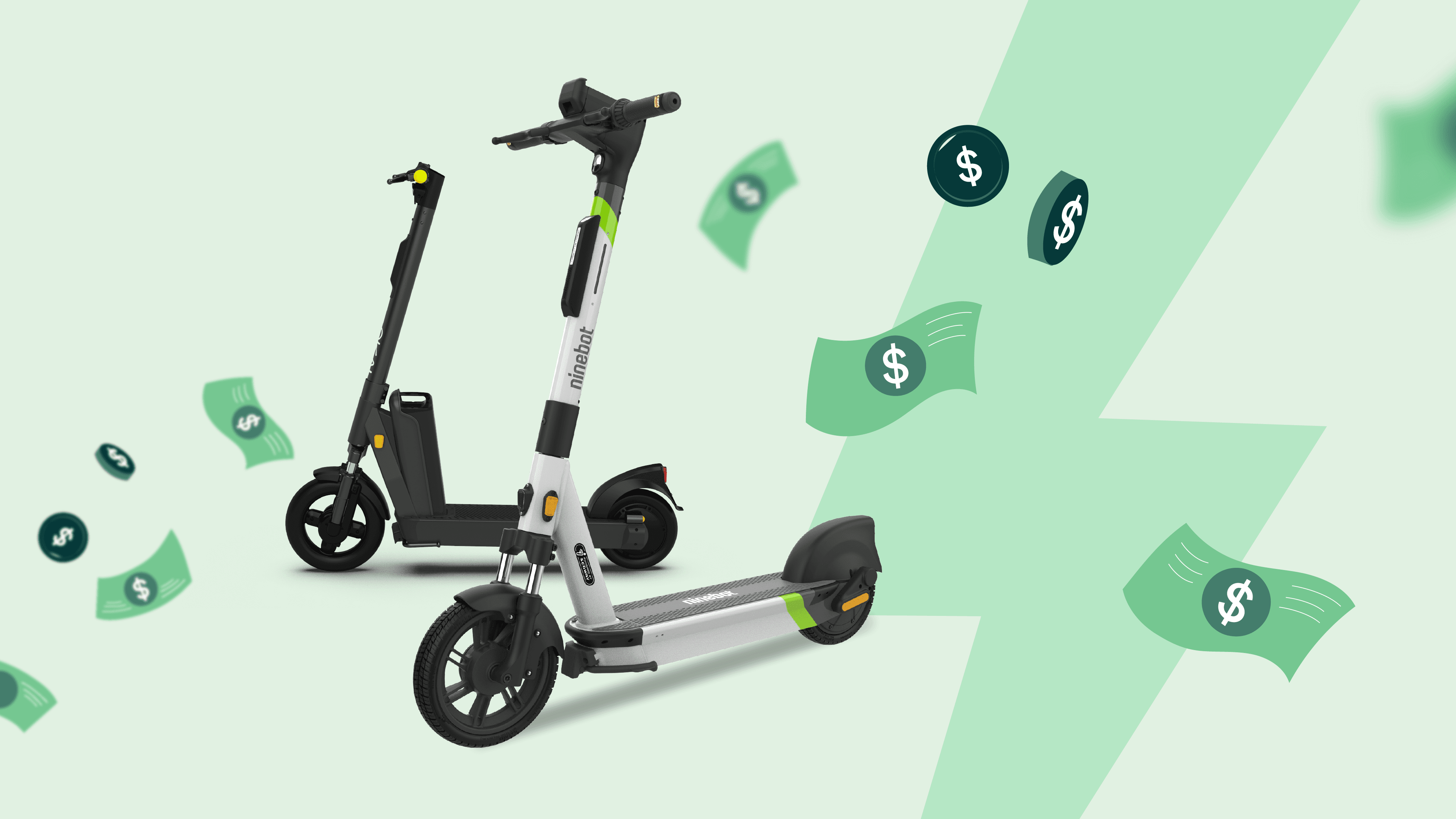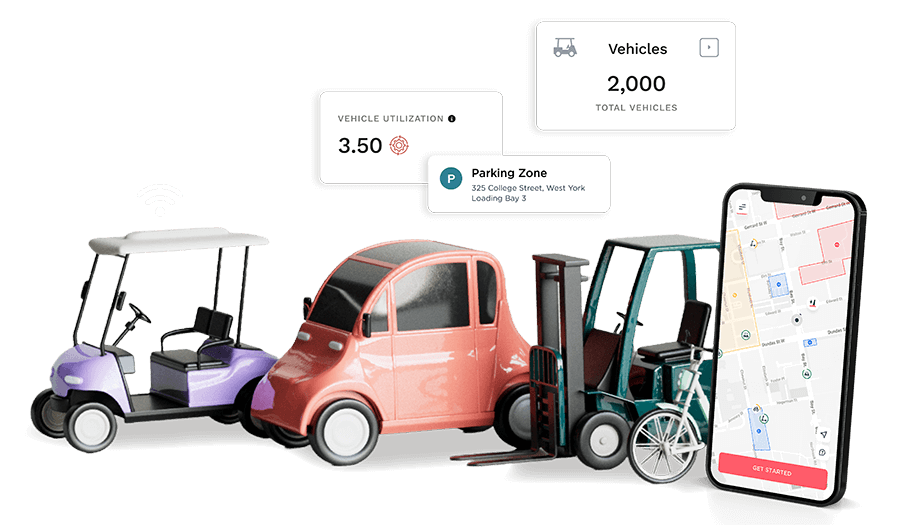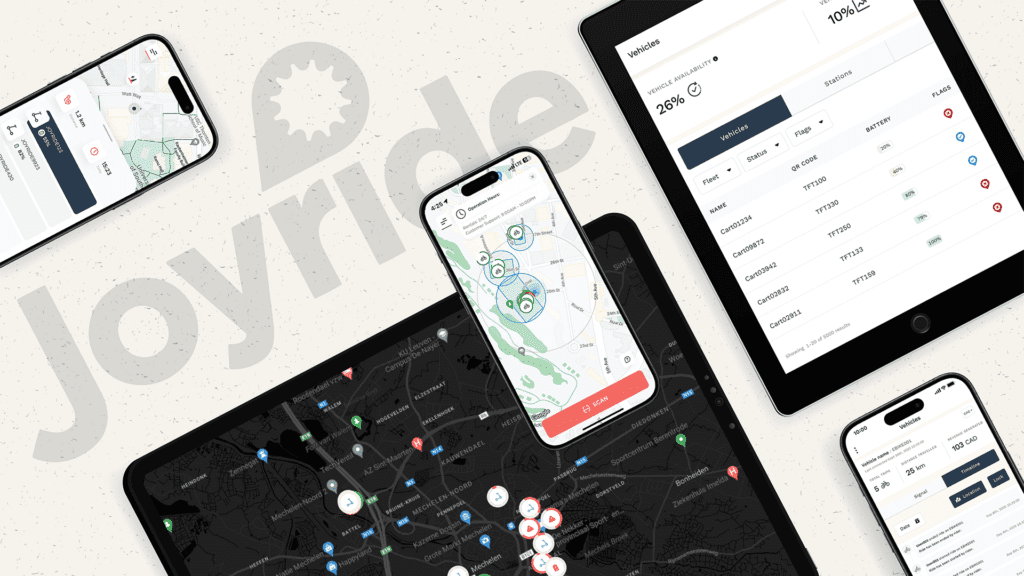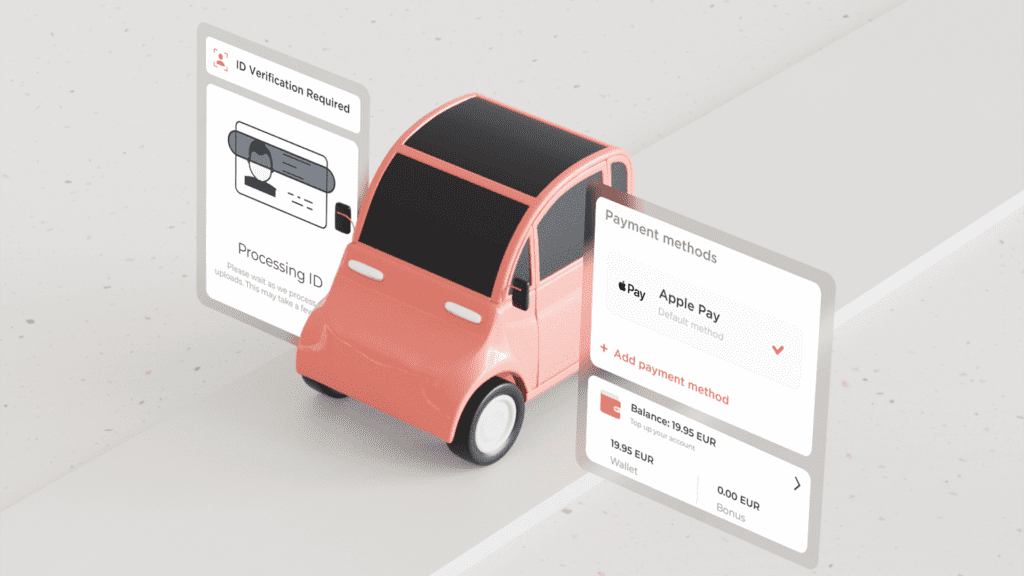When we talk about bettering the planet through sustainable mobility, one of the biggest drivers is, of course, the vehicle itself. Oftentimes, when adding operators to our software platform, we’re commonly asked, “How much do electric scooters cost to buy and maintain?”
Electric scooters are significantly more eco-friendly than cars (see by how much here), but they’re also tremendously more affordable.
So, how much money is needed upfront to purchase them? To maintain them? Can software help lower the price of scooter upkeep? Let’s get rolling with some answers:
The typical price of an e-scooter for shared purposes
Budget and circumstances – such as location and fleet size – will dictate what type of scooter will be best suited for your shared fleet. As a general overview, a top-of-the-line sharing-ready scooter will cost approximately US$700 to US$800 per unit, depending on order volume. These figures are before shipping and importing fees.
“Lesser” quality units are anywhere from US$200 to US$500 base price. Joyride operators typically opt for the pricier, higher quality vehicles for their fleets as they will have longer term usage, but there are alternatives available at lower price points should that be a necessary parameter for launching.
What to consider when purchasing your scooters
You might be assembling a fleet of hundreds of scooters, so what considerations need to be made when making a bulk order?
It is in an operator’s best interest to order replenishment parts for key components with their initial fleet shipment so you can be prepared for repairs and not risk vehicle down time waiting for parts that might never come.
Examples include:
- Kickstands
- Brake Lever sets
- Brake cables
- Replacement braking units
- Wheel covers/Fenders
- Lighting system components
- Spare motor controllers
- Spare battery hatch covers
- Handlebar grip sets
…and spare batteries
Many OEMs and manufacturers will recommend having 50% of spare batteries on hand; however, with today’s battery technology, unless your market demand is the very top of the global market, you should have operational procedures in place that will allow you to easily get by with 20% of your fleet volume’s worth of spare batteries.
The cost to properly maintain your fleet of scooters
Maintaining a fleet of shared scooters follows the same principles as owning and maintaining an automobile. Just like one has to change oil and tune up their car every so often, the same applies to scooters and e-bikes in order to maintain safe riding conditions.
This includes brake system calibrations, motor replacements, tire/wheel assembly replacement, fork and frame connection alignments, and general systems checks and software updates.
Each of these “tune-ups” comes with an associated part and/or labor cost. Like a car, these associated costs add up and accumulate into the overall Total Cost of Ownership (TCO), which equals the purchase price and all lifetime maintenance costs of the vehicle.
These costs will vary depending on unique factors to your business, such as parts costs for your vehicle model, labor costs in your market, and frequency of maintenance needs depending on the environmental and infrastructure layout of your market geography.
What about shipping and import costs for scooters?
One of the largest pain points when ordering bulk scooters is shipping. In fact, our Joyride Garage e-commerce shop was born out of the need to combat shipping delays and inflated fees for everyone in the micromobility industry. For those researching what to expect with standard shipping and importing fees, here’s the breakdown:
Shipping
This is going to vary depending on the destination of the order and the volume size. Higher volumes will mean the shipping costs will be broken down across more units, typically resulting in lower per-unit costs.
With the exception of Aike, all major scooters are currently manufactured in China or Taiwan. The first component of overall shipping costs is referred to as “Global Forwarding.” This is the cost it takes to place the vehicles in a shipping container, put on a freight liner and send them to a final port destination. Rates for global forwarding have dropped significantly since the height of the pandemic. Depending on container load and the aforementioned final destination port, a container might cost between US$1,800 to US$5,000.
Once the container reaches its port destination it will have to pass inspection and customs (and sometimes quarantine depending on the location).
After it passes customs, it will go on its final mile shipping. This could be a combination of intermodal (train and truck) or just truck. This will be a separate charge and again the prices vary depending on location and distance traveled, but expect anywhere from US$500 to US$3,500.
Import costs
These vary greatly from country to country. Every nation has fees to process imports, and most have some sort of tariff on top of that. Those can range from 0% all the way to 100% (i.e. the cost of your scooters just doubled!)
Therefore, it is best to rely on a customs broker to negotiate the best total rates package.
Don’t forget about the IoTs that make your vehicle shareable
Scooters become shareable once they are connected to a software platform through IoT (Internet of Things) capability. It is both financially and economically beneficial to opt for a fleet of vehicles that functions with integrated IoTs, meaning the vehicles come preloaded with IoT devices. But sometimes that’s not possible, which means the next best thing is adding an IoT device to the unit.
Depending on quality and order volume, add-on IoTs will cost between US$60 to US$200/unit, and an experienced installer will take approximately 20 minutes to fixate it to the vehicle.
How software keeps your hardware costs down
Extending vehicle longevity has a lot to do with upkeep, ridership volume and general conditions like weather. Software can also play a very important role in keeping scooters intact for as long as possible, which in turn reduces replacement costs and high repair fees.
Joyride operators use our all-encompassing platform to educate their riders about how to properly ride their scooters through pre-ride safety tutorials. Operators also ensure no one uses their vehicles while under the influence by implementing a Safe Ride feature, which is a gamified test the locks a vehicle before anyone can potentially have a harmful intoxicated ride. We also ensure regular battery maintenance through our Operator App so vehicles can be rebalanced efficiently, and our platform is the fastest in the industry when it comes to turning around support tickets.
Find out more about how our software connects to electric scooters by checking out Joyride’s features page.
Where to buy e-scooters for the lowest prices and fastest shipping times
Inspired to get going with a fleet of e-scooters? Joyride Garage was developed by our team of mobility experts as the fastest, most affordable resource for scooter purchases.
Scroll through our list of inventory and get the advice you need to make the most of your purchase by clicking here.







